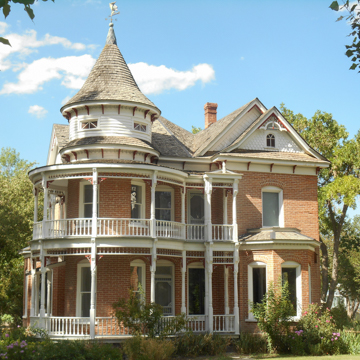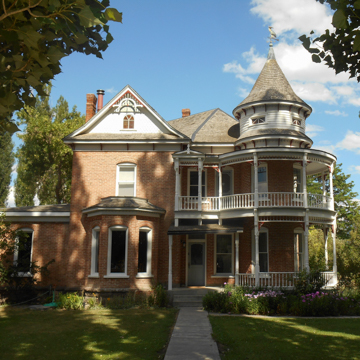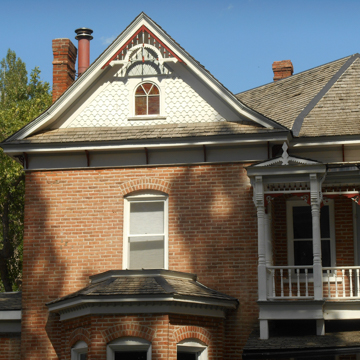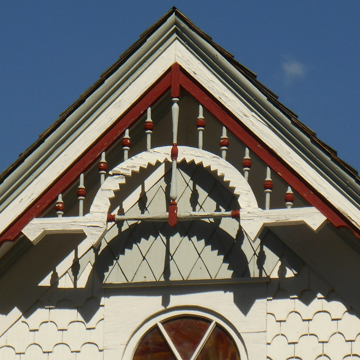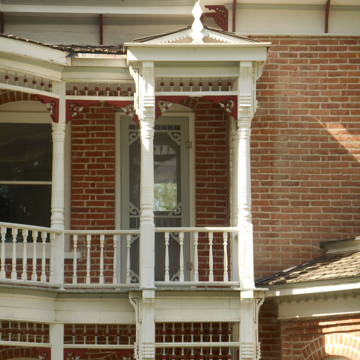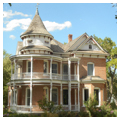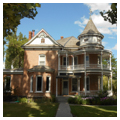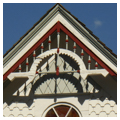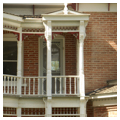Located in the South Central Idaho Mormon settlement of Oakley, the Benjamin Price Howells House demonstrates exemplary Mormon craftsmanship and knowledge of Queen Anne and Eastlake styles. Like other finely crafted houses in Idaho’s first Mormon settlements 100 miles to the east in Paris and Franklin, the Victorian houses of Oakley consist of earth-tone brick contrasted with spindlework and slender columned porches. Unlike Franklin and Paris—settled in 1860 and 1863, respectively—the village of Oakley wasn’t settled until five years after the death of Brigham Young in 1882. By then the church was less selective about who colonized the Idaho territory, so, in contrast, this town possessed two saloons patronized by Mormons and gentiles alike.
Benjamin Howells settled in the Goose Creek valley in 1875 at the age of 12. There he herded cattle for seven years before the first Mormon settlers arrived. Howells started his professional career in his twenties as a teacher, then lawyer, and eventually a Cassia County judge, where he accumulated a substantial amount of land and wealth. By 1907, at age 44, Judge Howells channeled his earnings into building the town’s only opera house, Howells Opera House on Blaine Avenue, and two years later, his own Victorian residence just a half block away.
The Howells House is one of several expertly crafted brick Victorian residences in Oakley, a town that swelled to nearly 2,000 by the turn of the century. Built by William Drummer and George Croft, the house is a mixture of Queen Anne brick massing and shingled gables complemented by Eastlake wooden spindlework on the porch and gable ends. The house’s most prominent feature is the corner two-story porch that wraps around a tower capped by a conical roof. The porch’s turned slender columns are secured with brackets and a frieze that incorporate the same repeating dowel and ball spindles found on the Standrod Mansion’s porch, 80 miles to the east in Pocatello. The upper porch is punctuated on either end by miniature three-foot cameo porches capped by a gable. Because the tower and wraparound porch orient themselves to the Howells Opera House, family and friends on a summer’s evening were sure to be reminded of Judge Howell’s primary civic contribution to Oakley.
The house remains a private residence.
References
Brown, Charlie. A History of Oakley, Idaho.Self-Published c. 2003.
Neil, J. Meredith. Saints and Oddfellows: A Bicentennial Sampler of Idaho Architecture. Boise, ID: Boise Gallery of Art Association, 1976.
Renk, Thomas, “Oakley District,” Cassia County, Idaho. National Register of Historic Places Inventory–Nomination Form, 1974. National Park Service, U.S. Department of the Interior, Washington, D.C.
Whiteley, Jacob. Historic Buildings of Oakley, Idaho. Oakley, ID: Oakley Historical Association, 2009.

